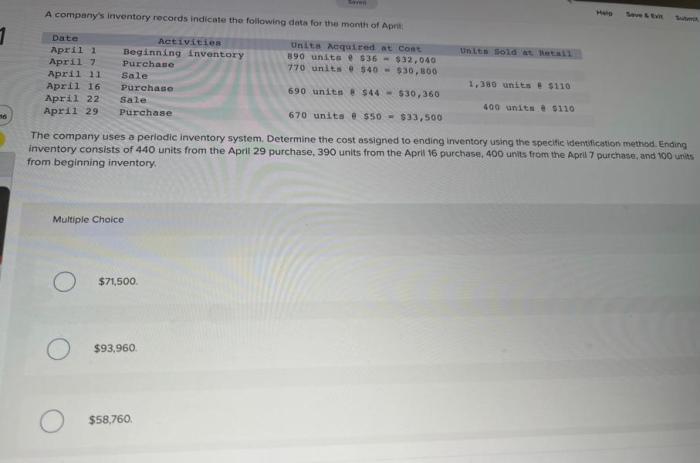A company’s inventory records report the following: the quantity, location, and value of inventory items. This information is critical for managing inventory levels, optimizing costs, and improving efficiency. Inventory records also provide insights into sales trends, customer demand, and supply chain performance.
This comprehensive guide will delve into the significance of inventory records, the different types of inventory records, and the steps involved in analyzing and reporting inventory data. We will also discuss best practices for maintaining accurate and reliable inventory records and explore case studies of companies that have successfully utilized inventory records to improve their operations.
Inventory Records: Overview

Inventory records are essential for businesses to track and manage their inventory. They provide a detailed account of all items held by a company, including their quantity, cost, and location. Accurate inventory records are crucial for a number of reasons, including:
-
-*Financial reporting
Inventory records are used to calculate the value of a company’s inventory, which is a key component of its financial statements.
-*Cost control
Inventory records help businesses track the cost of their inventory, which is essential for managing expenses and profitability.
-*Sales forecasting
Inventory records can be used to forecast sales, which helps businesses plan for future production and sales levels.
-*Inventory management
Inventory records are used to manage inventory levels, which is essential for preventing shortages and overstocking.
Key elements typically included in inventory records include:
-
-*Item number
A unique identifier for each item in inventory.
-*Item description
A brief description of the item.
-*Quantity on hand
The number of units of the item currently in stock.
-*Unit cost
The cost of each unit of the item.
-*Total cost
The total cost of all units of the item in stock.
-*Location
The location of the item in the warehouse or other storage facility.
Top FAQs: A Company’s Inventory Records Report The Following
What are the key elements typically included in inventory records?
The key elements typically included in inventory records are the quantity, location, and value of inventory items. Additional information may also be included, such as the item’s description, unit of measure, and reorder point.
What are the different types of inventory records?
There are three main types of inventory records: stock records, perpetual inventory records, and periodic inventory records. Stock records are simple records that track the quantity of inventory items on hand. Perpetual inventory records are more detailed and track the quantity, location, and value of inventory items on a continuous basis.
Periodic inventory records are taken at specific intervals, such as monthly or quarterly, and provide a snapshot of the inventory on hand at that point in time.
What are the steps involved in analyzing inventory records?
The steps involved in analyzing inventory records include identifying trends, patterns, and anomalies in the data. This can be done using a variety of techniques, such as graphical analysis, statistical analysis, and trend analysis. Once trends, patterns, and anomalies have been identified, they can be used to make informed decisions about inventory management and control.


